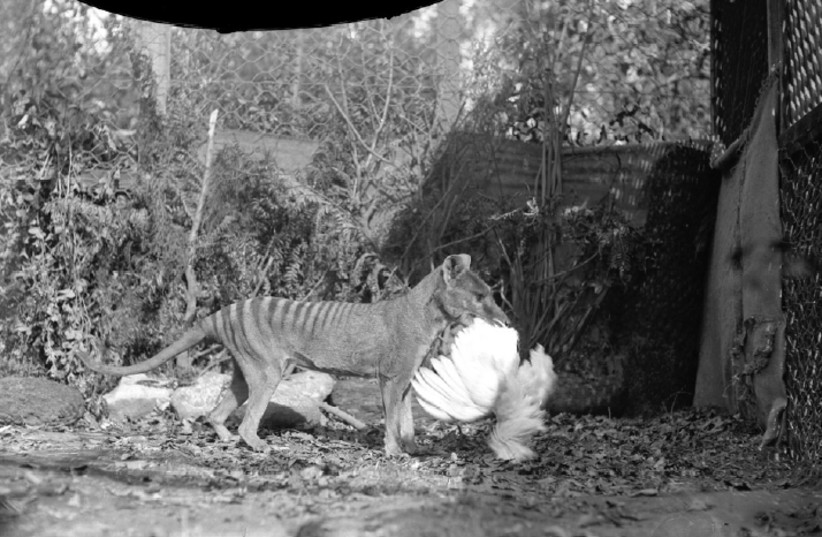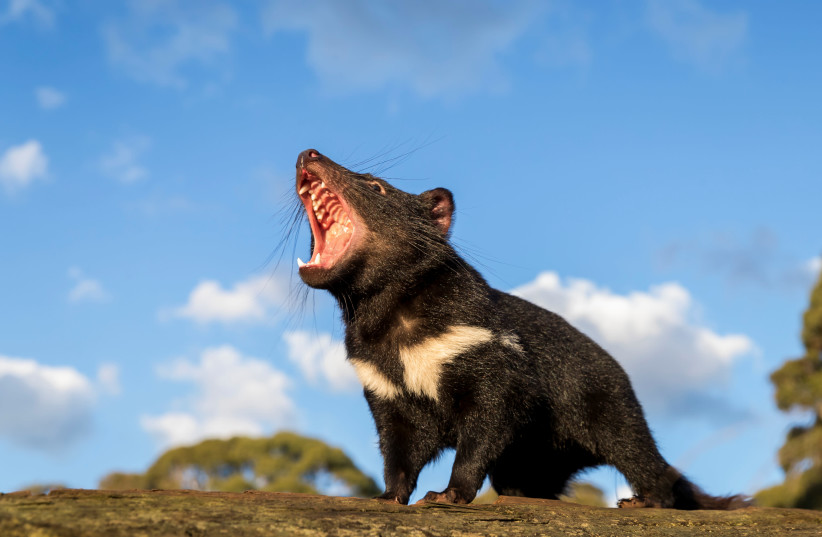A collaborative effort by scientists, entrepreneurs and the Hemsworth brothers is being made to bring the extinct Tasmanian tiger back to life through genetic engineering.
The effort is helmed by Colossal Biosciences, a genetic engineering and de-extinction company founded in 2021 by scientist George Church and entrepreneur Ben Lamm, and the University of Melbourne's Thylacine Integrated Genetic Restoration Research Lab, headed by Andrew Pask. Also supporting this are other investors, among them the famed Australian celebrity actor brothers Chris, Liam and Luke Hemsworth.
<br>What is a Tasmanian tiger?
Also known as a thylacine or sometimes as the Tasmanian wolf, the Tasmanian tiger was a carnivorous animal that lived in Australia as well as the neighboring islands of New Guinea and Tasmania. The name thylacine is from its scientific name Thylacinus cynocephalus, which means dog-headed pouched-dog.
These predatory animals were given the name Tasmanian tiger due to their striped backs and the name Tasmanian wolf because they have canine-like features and characteristics.

Despite this, the Tasmanian tiger was neither feline nor canine. Rather, it belonged to the order known as Dasyuromorphia, which refers to a group of nearly all Australian carnivorous marsupials, such as quolls, numbats and Tasmanian devils.
As a marsupial, the Tasmanian tiger possesses a considerably different lineage than cats or dogs. This is because all marsupials, which are members of the Marsupialia infraclass, are descendants from a different group than placental mammals – animals that carry their fetuses in the uterus and provide nourishment via the placenta.
By contrast, marsupials only nourish their fetuses with the in-uterine placenta for a much shorter period. They give birth to their offspring when they are still much less developed and are instead carried around in a pouch.
The reason for the Tasmanian tiger's similarities to both wolves and tigers is due to the phenomenon known as convergent evolution, where species unrelated to one another and in different areas or time periods develop similar features.
This is important as it also reflects what role in the local ecosystem the Tasmanian tigers would have served.
In the regions where they lived, thylacines dominated as an apex predator, similar to many wolves or big cats like tigers. Exactly what prey they may have hunted is a matter of some dispute, though it is most likely they liked to prey on birds like emus. In any case, their status at the top of the food chain is something scientists are confident of.
<br>Why did the Tasmanian tiger go extinct?
Exactly why the Tasmanian tigers went extinct is a matter of debate, specifically regarding when and why they went extinct in New Guinea and mainland Australia.
Some point to the fact that the arrival of dingoes on the Australian mainland may have played a role, though this is disputed since dog-like omnivores hunted during the day while Tasmanian tigers were nocturnal carnivores.
The considerable role of increased human presence and technological advancements that were made as time went on also contributed to thylacine extinction.
But much more is well-known about the Tasmanian tiger's extinction on the island of Tasmania. When the British Empire began to settle Australia, it was believed that the animals were mostly if not entirely confined to Tasmania.
Aside from habitat loss due to human actions, increased competition from wild dogs brought by settlers and a loss of prey, Tasmanian tiger numbers were already suffering.
Humans are usually given the largest share of the blame for this, and it is true that farmers and bounty hunters alike both took out huge swaths of the animals.
But there is also a genetic factor, and studies have pointed to a severe decline in genetic diversity over the course of tens if not hundreds of thousands of years.
The Tasmanian tiger was nearly gone by the 1920s, the last known wild thylacine being shot by a farmer in 1930.
There were some in captivity but all breeding efforts failed. The last known Tasmanian tiger in captivity, a male named Benjamin, died in September 1936.
Resurrecting extinct animals: Has science gone too far?
With all this in mind, the question remains: Can we bring the extinct Tasmanian tigers back?
According to Pask and Colossal Biosciences, the answer is yes.
How would this be done? Through some clever genetic engineering. Take some of the genetic material we have from Tasmanian tigers - which will be possible, since the extinction was so relatively recent - and splice it with some of its living relatives by using CRISPR technology (clustered regularly interspaced short palindromic repeats).
And there are a number of relatives to choose from, though according to reports, it seems the likely genetic base will be the dunnart – an adorable mouse-sized marsupial.
With this combined, it would result in the creation of an embryo that could be placed either in a test tube womb or a living host to eventually nurture into or birth the resurrected Tasmanian tiger.
There isn't really a known timetable for this yet, but according to media reports, Colossal's co-founder Lamm thinks that Tasmanian tigers will once again prowl Australia and Tasmania within just 10 years - and this is in part thanks to the fact that, as marsupials, thylacines have a very short gestation period.
That isn't to say this is the only animal they want to bring back from extinction. In fact, Colossal Biosciences has already announced plans to bring woolly mammoths back from extinction.
<br>But why bring back Tasmanian tigers?
There are a number of reasons why this species in particular is the subject of de-extinction efforts. Specifically, Australia has incredibly unique wildlife, but its biodiversity has been on a fast decline.
Efforts have already been made to remedy this by reintroducing some species, such as an effort to bring Tasmanian devils back to mainland Australia in 2020.

That was actually made possible thanks in large part to the Hemsworth brothers, specifically Chris Hemsworth of Marvel Cinematic Universe fame, who made significant strides to help accomplish this.
But even among other Australian wildlife, the Tasmanian tigers are significant as they are apex predators.
Apex predators serve important roles in maintaining ecosystem balance. Without them, disease, wildfires and invasive species can spread rampantly.
That is exactly what happened in Australia, which currently has the world's worst mammalian extinction rate.
But if they're reintroduced to the wild, the Tasmanian tiger can hopefully bring balance to the ecosystem.
